If you ever had a chance to participate in a Strategy Definition meeting, you either had a good time because YOU were dictating the strategy to follow or had an awful experience because your recommendations were totally altered, down-graded to a point of irrelevance or blown out of proportion making them un-achievable. Needless to say, for most people a Strategy Definition meeting is an experience comparable to a visit to the dentist for a root canal.
As I already mentioned, not only is our organizational structure different from most organizations but so is our strategic process. As opposed to a top-down Strategy Definition where the Top Executives come up with the Strategy, we use a bottom-up approach. Once again, we rely on the wisdom of the crowd to come up with the best strategy we can achieve. Not only is the strategy sound, it also removes the need to obtain buy-in after the fact since employees participated in the definition of their strategy.
We’ve implemented a Balanced Score Cards approach to our strategic planning process 6 months ago. This approach is helping us move forward but the format of our previous meetings left a lot of room for improvement. After asking around for an alternate approach for the meeting, François suggested we try a World Café format. After reading about the principles and the book (The World Cafe: Shaping Our Futures Through Conversations That Matter), we spent time preparing and planning for the meeting. Needless to say, the Strategic Café was a huge success.

World Café used to Define the Corporate Strategy
I want to sharing with you the agenda of the meeting as well as the questions asked during the sessions. If you are not already doing so, I strongly recommend you start using this facilitation approach to improve your meetings – including your next Strategy Definition meeting.
If you would like more information on how to organize your own Strategic Café, you can drop me an email (martin [at] analytical-mind.com). I’d be happy to help.
Agenda – Day 1
Breakfast (8:00 to 8:25)
Welcome and meeting introduction (8:25 to 8:30)
Warming up the brain cells (8:30 to 8:45)
We asked participants to compete in a friendly game of Rush Hour. The intend was to introduce a fun element in the day in preparation for the meeting.

Strategic Café
World Café – Retrospection of the previous 6 months (8:45 to 10:30)
Background: What should be done to improve the organization on the following 5 dimensions: communication, accountability, prioritization, leadership and decision making?
Question: What are the challenges encountered within the organization and what is my contribution to meeting these challenges?
5 Tables: Communication, Accountability, Prioritization, Leadership, and Decision Making.
Mechanics: The participants are allowed 15 minutes at each table.
At the end of the exercise: Each of the 5 paper-table-cloths is assigned to an individual responsible to come up with a plan of actions.

Strategic Café
Pause (10:30 to 11:00)
Presentation of the new governance model (11:00 to 12:30)
Unfortunately, this part is confidential
Lunch (12:30 to 1:15)

Strategic Café
World Café – Improvement to the well-being of people (1:15 to 3:00)
Background: In 1 year from now, what will be the impact of our organization on the following 4 sectors: employees, existing customers, stakeholders, and potential customers?
Question: What programs should we develop to meet our objective of improving people’s well-being?
4 Tables: Employees, Existing Customers, Potential Customers, and Society.
Mechanics: The participants are allowed 20 minutes at each table.
At the end of the exercise: Participants were asked to select the top 4 priorities for each of the sectors and write them on a master flip-chart. Participants were then asked to vote to select the top 4 priorities overall on which the organization would invest time, energy and resources to move forward.
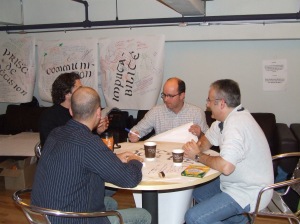
Strategic Café
Pause (3:00 to 3:30)
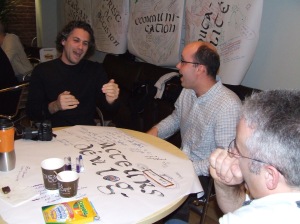
Strategic Café
World Café – Selection criteria to prioritize our initiatives for the next 6 months (3:30 to 5:15)
Background: Given the limited resources and the large number of initiatives within our organization, which criteria do we want to use to prioritize and select the initiative that we will move forward using the following areas: Financial, Customer experience, and Employee learning and growth?
Question: Which criteria we will use to determine our priorities?
3 Tables: Financial, Customer Experience, and Employee Learning and Growth
Mechanics: The participants were allowed 20 minutes at each table.
At the end of the exercise: Participants were asked to select the top 4 priorities for each of the sectors and write them on a master flip-chart. Participants were then asked to vote to select the top 4 priorities overall. Those would become the criteria used to prioritize our initiatives for the next 6 months.

Strategic Café
Dinner (6:00 to 8:30)
As an analogy to our Strategic Meeting, we had organized dinner at O’Noir.
I’ll be publishing Day 2 of our meeting shortly.





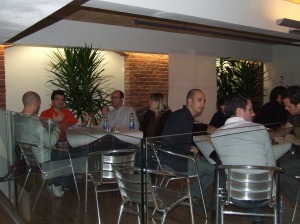
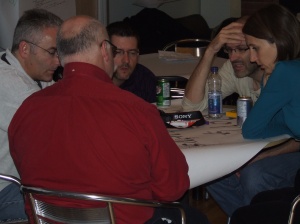









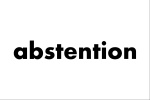





Recent Comments